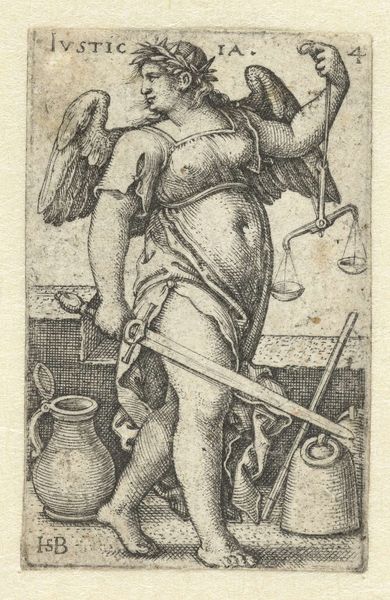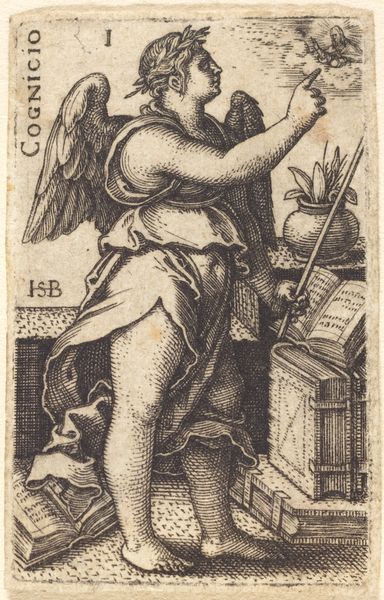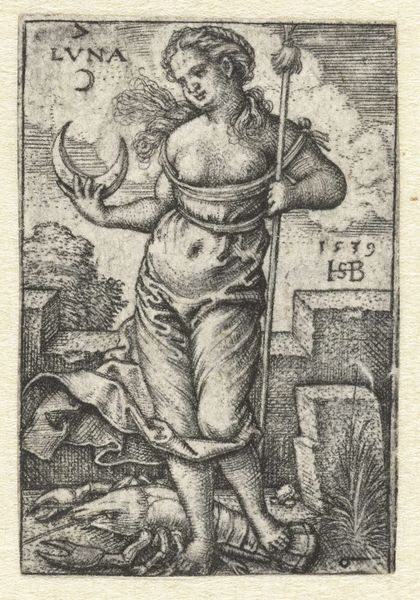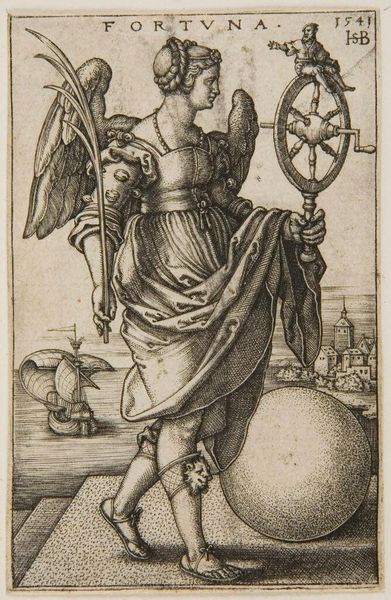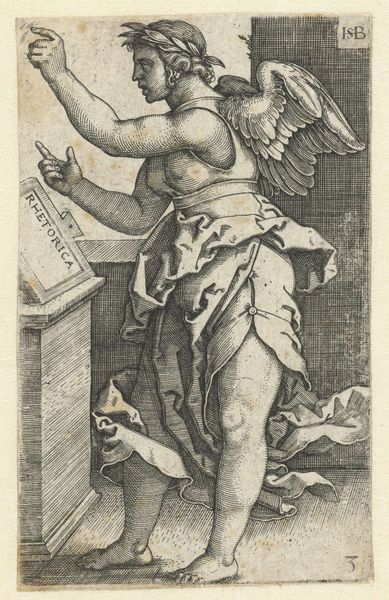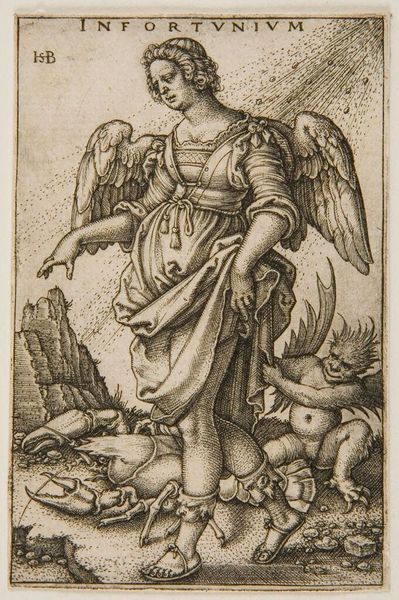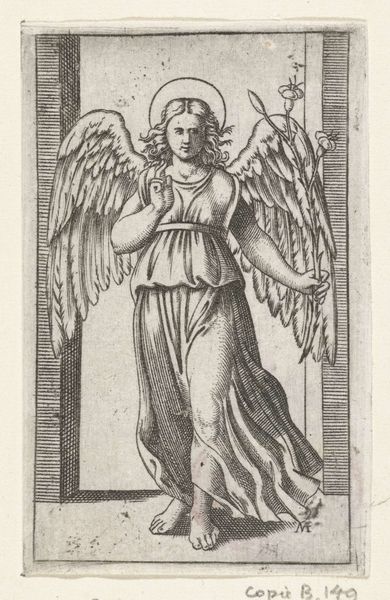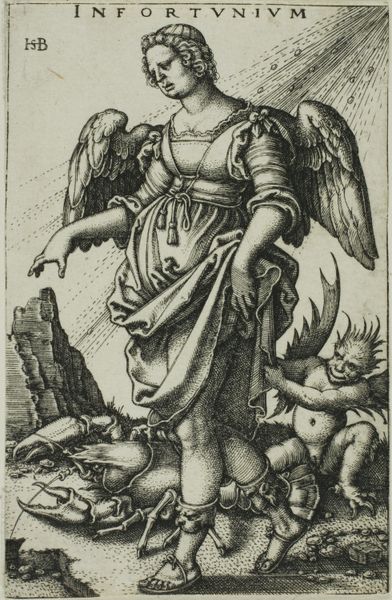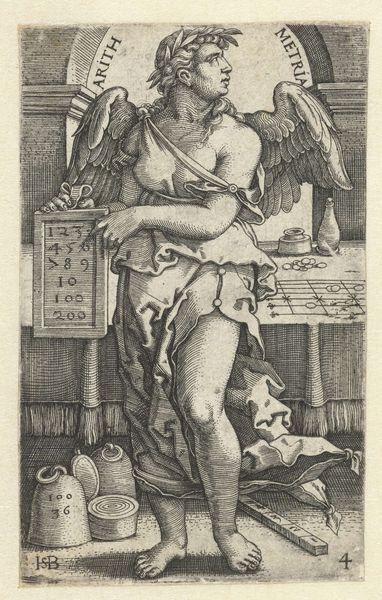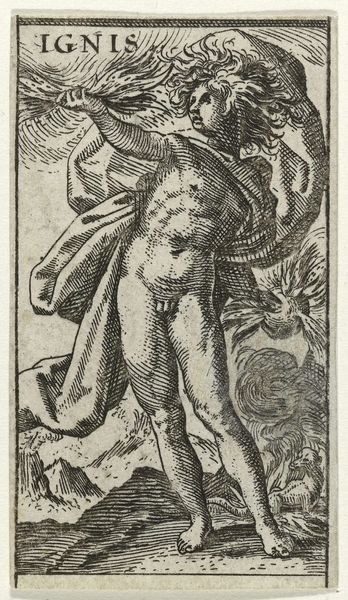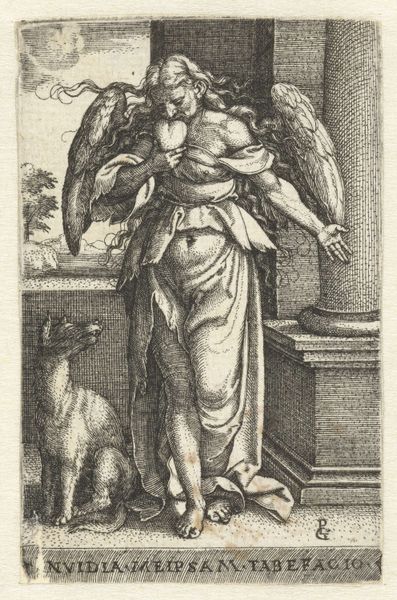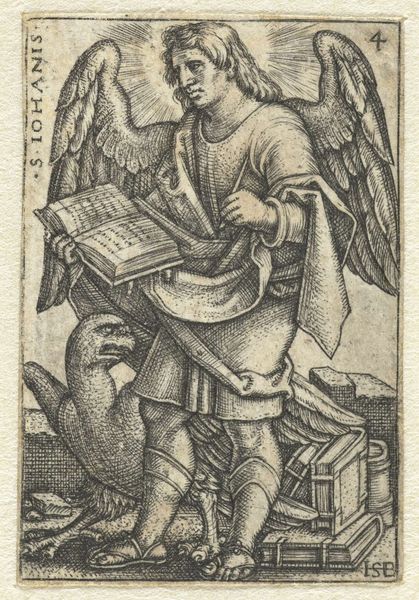
Dimensions: height 40 mm, width 25 mm
Copyright: Rijks Museum: Open Domain
Curator: Looking at this small but intricate engraving titled "Voorzichtigheid (Prudentia)," made in 1539 by Sebald Beham, one is immediately struck by the symbolic density. It's currently held at the Rijksmuseum. Editor: Whoa, even in this tiny size, there's so much detail! The figure is powerful and thoughtful. Her gaze directed at that hand mirror is striking, giving a sense of deep, perhaps troubled, reflection. Curator: Absolutely. The figure represents Prudence, an allegory frequently depicted during the Renaissance. She embodies wisdom and foresight. What you're observing is not merely reflection but also the self-awareness and knowledge needed to make reasoned judgements. Editor: I see. And that serpent coiled around her arm? It feels a bit ominous but also quite… integrated into the design. It is so cleverly rendered. Curator: The serpent represents wisdom. Together with the mirror and other implements visible in this artwork, they are attributes of prudence: self-knowledge informed by wisdom, that ultimately lead to circumspection. And also this art piece emerged during a period of religious and social upheaval. Editor: The kind of upheaval that makes you stare intensely into a mirror, pondering all of life’s terrible, complicated choices, eh? The composition feels modern, in a way. The artist used the available picture space wisely, or prudently, dare I say. Curator: Exactly. I believe you can read it as Beham’s own plea for measured action in unstable times. It also shows how printmaking allowed artists to circulate complex ideas widely during the Reformation. The role of public art could be instrumental in these contexts. Editor: Yes. It's a bit scary, really. So much responsibility bundled into a tiny print. It almost feels urgent, as if Beham is calling us through time to ponder how we make decisions. Curator: Indeed. It’s a potent reminder that visual language carries immense weight in guiding—and shaping—societal values. Editor: I think the snake really drove the whole idea home. Its symbolism, even today, rings so loud. It leaves you contemplative... Curator: Contemplative, indeed, the desired outcome for its Renaissance audience as well.
Comments
No comments
Be the first to comment and join the conversation on the ultimate creative platform.
